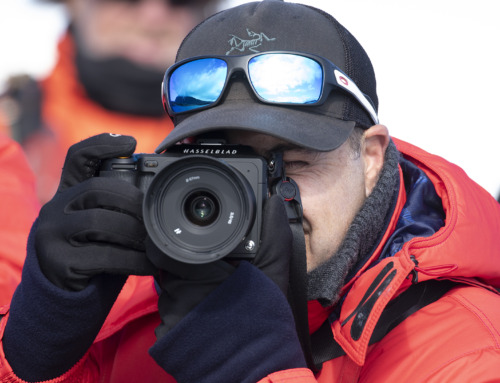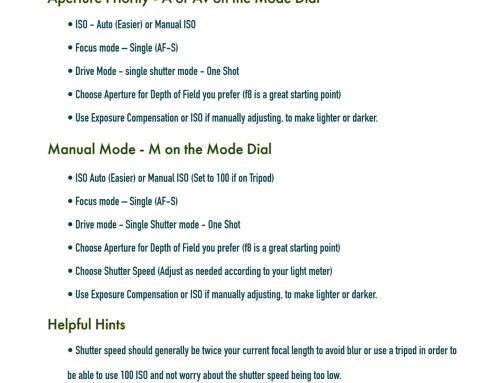Gather your gear – Camera, your fastest & widest lens and a tripod. A wide angle lens with a large opening (small f stop) such as f2.8 or better is preferred.
Optional gear – remote release and if you will be shooting somewhere where dew appears on the grass each morning- a hand warmer and a rubber band to keep the end of your lens fog free. Just attach the hand warmer under the front side of your lens. A headlamp with a red light can also be helpful. Using the red light preserves your night vision making everything easier to see.
Find your infinity focus. – Sometimes this is lined up with the infinity mark on your lens, sometimes it is close and sometimes you don’t even have an infinity mark on the lens. The easiest way we have found to find infinity – setup with a brighter light in the distance, street lamps work well. They should be at least 300’ or 100 meters away. About the length of a soccer field. Turn live view on and use the live view magnifier to enlarge the image. Now carefully turn the focus dial looking for the sharpest results. It can be tricky with the low light and noisy live view but there will be a point on the dial when it looks the best. Take note of that or use a small piece of gaff tape to secure your focus ring in place.

If you have a sky with brighter stars you can use the same technique, skip the street light and magnify on the brighter star(s) – when the stars are in focus they will be tiny points of light. They grow larger when out of focus.
If you have a mirror-less camera – you can turn on focus peaking. Focus peaking outlines in focus objects with small colored dots. When used with stars the focus peaking actually completely consumes the star when focus is achieved. If you can still see the star it is probably not in focus.

Photographing
Camera Setup – check that the tripod is stable and secure and carefully check that you have firmly locked the camera onto the tripod before letting go – it’s easy to think everything is connected in the dark but can turn tragic when your camera is at your feet seconds later.
Getting Composition – it’s unlikely that you will be able to see much in your viewfinder or on the LCD – I generally estimate and try for 1/3 ground and 2/3 sky. Use your camera’s level to make sure your horizon is straight.
Test Shots – I like to start around 8-10 seconds exposure, ISO 3200 and your widest aperture available to you. The resulting image might be noisy and darker than you want but it should give you a good idea about your composition and allow you to double check focus. Zoom in on the stars. They should be sharp little dots. Adjust if necessary and shoot again. if you don’t have a remote release use the 2 second timer on your camera.
Making the pretty photos – Once you have nailed composition and focus I typically extend the shutter speed and lower the ISO. Your shutter speed is limited by your focal length and the speed of the rotation of the Earth. The easy method – divide 500 by your focal length to get the suggested maximum speed. If you are shooting with a 24mm lens on full frame camera (500/24 = 20) 20 seconds is the longest shutter you can use before the stars will start to streak or trail. With many high megapixel sensors the actual time is shorter. If you plan to print you should follow the NPF rule and the wonderful App, Photo Pills includes a calculator that will give you a more precise time. Typically 10-15 seconds is safe. Just keep in mind when using the 500 rule you do have to account for crop factor if not using a full frame lens. The NPF calculator takes into account crop factor.

Here is a video overview by Toby Gelston of Photo Enthusiast Network and Photorec.tv!






